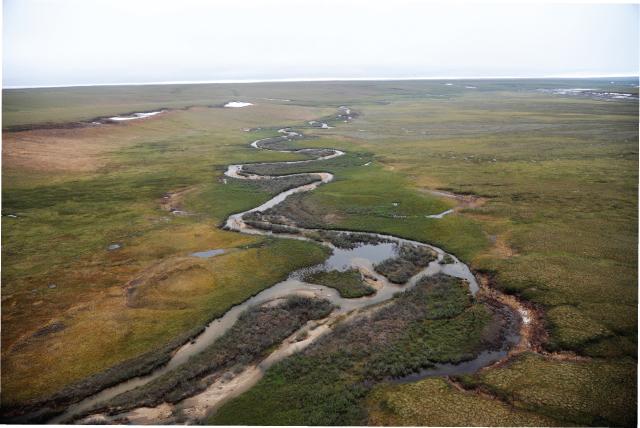By Kennedy Maize
Taiwan’s state-owned CPC Corp. has signed a letter of intent to buy liquefied natural gas from the nascent Alaska LNG project and invest in the project, according to a news release from the giant Taiwanese firm. Alaska Gov. Mike Dunleavy and Taiwan’s Geu Zhihui, minister of economic affairs, witnessed the signing of the letter of intent in Taipei Mar. 20. CPC is Taiwan’s petroleum, natural gas, and gasoline company and is the core of its petrochemicals industry.
The deal comes after Alaska Gasline Development Corp., the sponsor of the $44 billion, 800-mile pipeline project, said in January that it is in talks Glenfarne Group LLC of New York and Houston to take over the project. The Federal Energy Regulatory Commission approved the project in 2020 to move North Slope gas to Asian markets. It has not begun construction. At CERA Week earlier this month, Dunleavy said the project could begin shipping gas by 2030.
President Trump touted the project at his pseudo-state of the union address Mar. 4, saying, “There’s never been anything like that one. It will be truly spectacular. It’s all set to go. The permitting is gotten.” Not exactly.
Press accounts of Taiwan’s letter of intent suggest it is motivated to head off the Trump administration’s possible tariffs. Rigzone commented, “Taiwan is preparing to buy more liquefied natural gas from the US to reduce its trade surplus and potentially avoid higher tariffs.” Before the Taiwan announcement, Global Data wrote, “Japan has signaled interest in backing the project and, according to Dunleavy, talks are ongoing with Taiwan, South Korea and Thailand, countries with which the US does not currently have free trade agreements. However, concerns remain about economic sustainability and the timeline to completion.”
_____________________________________________________________________________________________________________
In other Alaska energy news, Interior Secretary Doug Burgum said he is taking steps to accelerate federal oil and gas leasing on Alaska’s Arctic National Wildlife Refuge (ANWR) and the National Petroleum Reserve Alaska (NPRA). ANWR has been the scene of tussles over energy exploration among developers, environmentalists, and multiple native groups for over 40 years, without any federal leases signed.
Burgum said, “For far too long, the federal government has created too many barriers to capitalizing on the state’s energy potential. Interior is committed to recognizing the central role the State of Alaska plays in meeting our nation’s energy needs, while providing tremendous economic opportunity for Alaskans.”
BLM photo
Interior’s Bureau of Land Management will make 82% of the NPRA’s 23 million acres available for leasing (almost 36,000 square miles, or about the size of Indiana), and the entire 1.5 million acres of ANWR’s coastal plain (aka the 1002 area). When the Biden administration’s BLM tried to sell leases to 400,000 acres late last year, the auction drew no bids. The oil and gas industry claim the amount of land offered was too small, so Burgum’s action removes that alleged obstacle.
Whether BLM’s move will draw industry bids is an open question. ANWR leasing has been controversial for more than 40 years, with industry, the state, and local Inupiat leaders in favor. The industry does not seem particularly interested in actually exploring existing leases, an expensive proposition in Alaska’s tough environment. It may see value in stockpiling leases at low cost as a future hedge.
Charles Lampe, president of the for-profit corporation owned by the residents of Kaktovik, a village of some 270 people on the coast next to the 1002 lands at the northern edge of the refuge, told the Alaska Beacon, “As the only community within ANWR’s 19-million-acre boundaries, we have fought for years for our right to self-determination and local economic development in our indigenous homelands.”
National and local environmental groups and a native Athabaskan tribe, the Gwich’in, who live in mountainous northeastern Alaska and northwestern Canada, have opposed drilling in the coastal plain. The territory is the summer home of the Porcupine herd of caribou, a main food source for the tribe. Ben Jealous, executive director of the national Sierra Club, said, “The Sierra Club and its millions of members and supporters across the country stand with the Gwich’in and Alaska Natives in opposing these actions.”
___________________________________________________________________________________________________________
The Trump administration’s Environmental Protect Agency has rolled back a requirement that LNG exporters monitor and report their emissions of methane, a significant greenhouse gas. The retreat on methane monitoring and reporting came in a Mar.12 memo to agency officials from Jeffrey Hall, acting EPA assistant administrator.
The memo said that, among other actions the agency was taking to comply with Trump administration policies, “enforcement and compliance will no longer focus on methane emissions from oil and gas facilities.”
Two days later, EPA Administration Lee Zeldin included the methane forgiveness among 31 “historic actions in the greatest and most consequential day of deregulation in U.S. history, to advance President Trump’s Day One executive orders and Power the Great American Comeback.” The Environmental Defense Fund commented, “Breaking the law should have consequences but when it comes to the oil and gas industry, EPA Administrator Lee Zeldin doesn’t think so.”
The LNG industry brushed off the EPA rule rollback as irrelevant. The Trump rules don’t trump European rules in place well before the U.S. regulations went into place. Fred Hutchison, president of industry group LNG Allies, told Reuters, “Whatever changes are made to how the United States regulates methane, including the endangerment finding, the EU methane regulation remains unchanged.”
Chris Treanor of LNG interest group Partnership to Address Global Emissions (PAGE), whose members include industry giants EQT and Williams, said, “Our members have invested tens of millions of dollars reducing their emissions all before any U.S. regulations were in place. They are committed to continuing to drive down their emissions.”
To subscribe, for access to back issues, and a searchable archive, The Quad Report.









